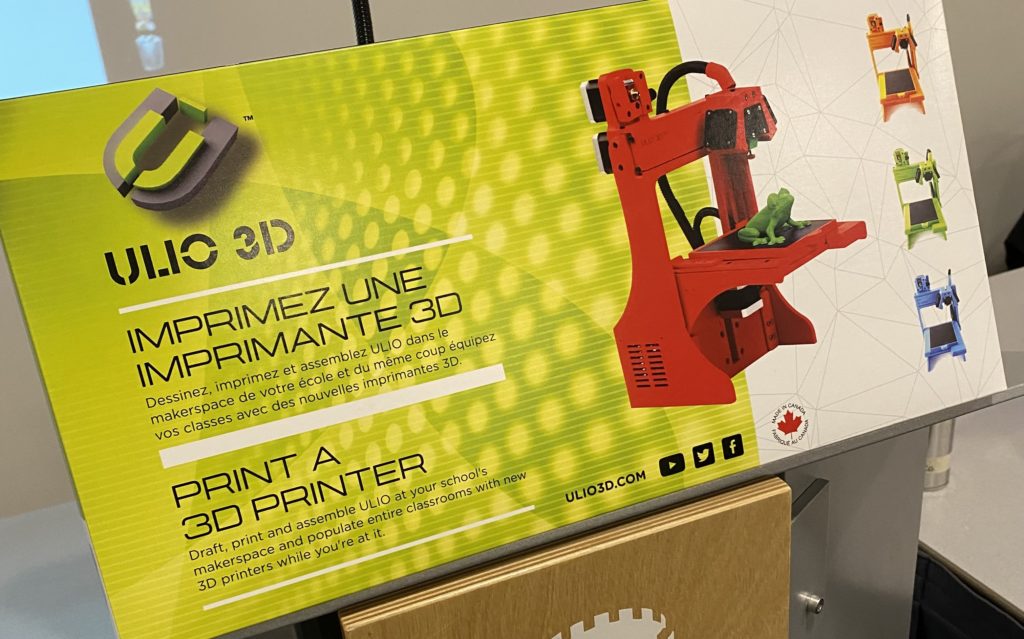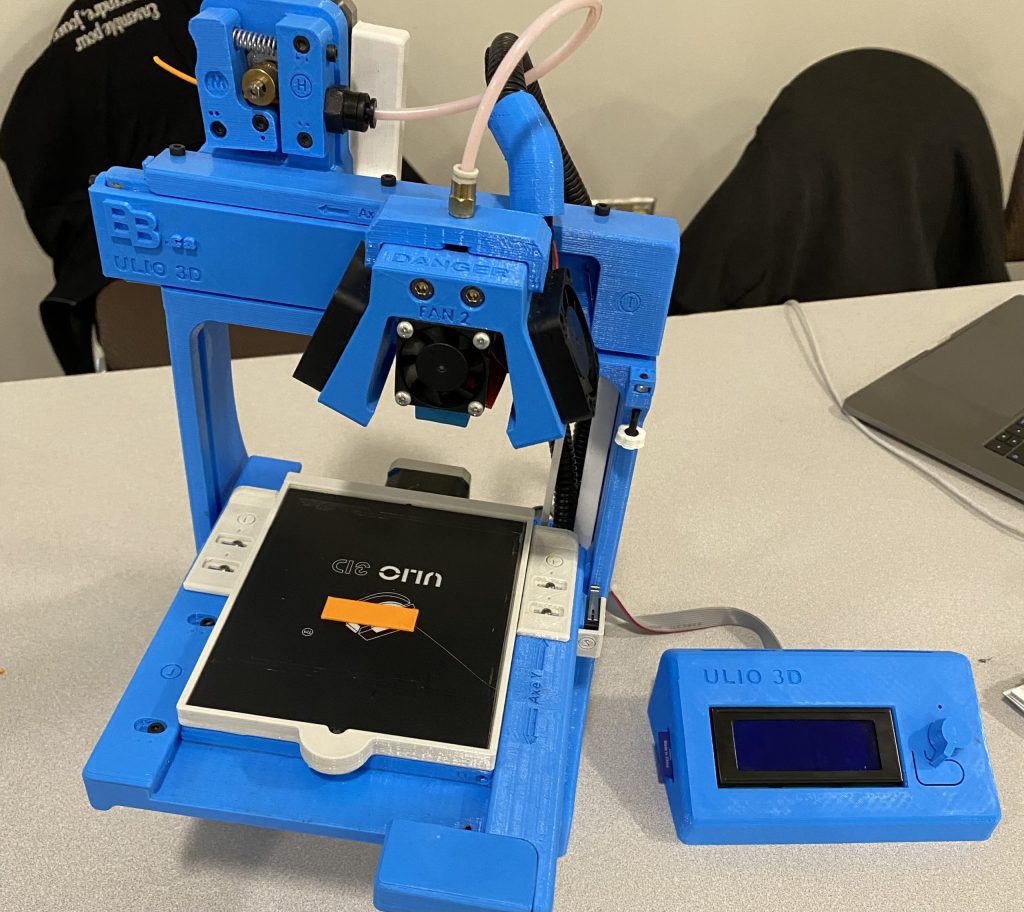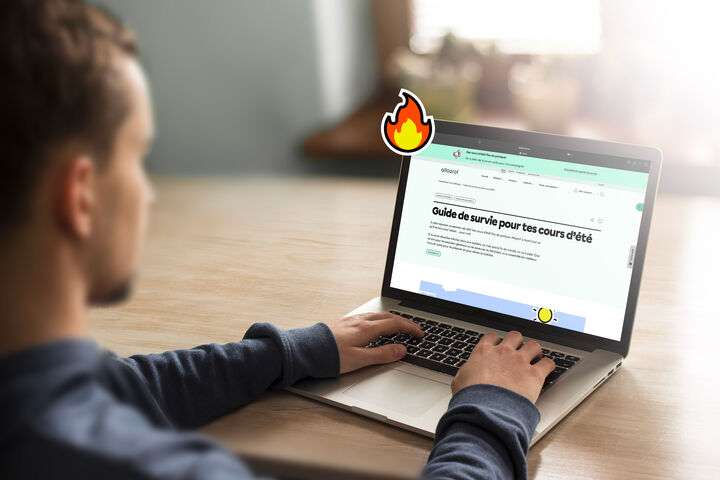Pourquoi acheter une imprimante 3D lorsqu’on peut en fabriquer une? Surtout si cela peut faire partie d’une démarche pédagogique? C’est ce que propose Joseph Issa, inventeur de la Ulio 3D. Il était de passage au 40e colloque de l’AQUOPS récemment pour présenter l’appareil et le projet pédagogique qui permet de lui donner vie.
Attention, ce projet s’adresse à ceux qui veulent se lancer dans un projet un peu plus complexe, mais qui permettra aux jeunes d’exploiter leur potentiel à la puissance 1000! Vous aurez aussi besoin d’une « imprimante mère » pour imprimer votre création, mais après, cette dernière pourra même être utilisée pour « s’auto-réparer » en cas de bris de pièce.
« Le projet de la Ulio 3D permet d’aller plus loin pour laisser les jeunes qui ont beaucoup d’imagination explorer. Ce projet déborde du cadre d’un cours habituel. Il peut être vécu sous forme de projet parascolaire ou de cours de création numérique sur plusieurs semaines. Certaines écoles le proposent aussi lors de journées pédagogiques », a expliqué Marc-André Caron, formateur chez Brault & Bouthillier, qui est revendeur du produit pour les écoles.
« Imaginez la fierté pour les élèves qui ont la possibilité de fabriquer une imprimante 3D qui servira ensuite à toute l’école. Ils deviennent de véritables personnes-ressources pour l’ensemble de l’école. Et oui, les jeunes sont capables de relever ce défi. Faites leur confiance! », fait valoir Joseph Issa, créateur de la Ulio 3D, qui aurait rêvé de vivre ce genre de projet lorsqu’il était lui-même à l’école.

Démarche segmentée
Une fois le matériel nécessaire à la fabrication de l’imprimante acheté, les écoles ont accès à un tutoriel en ligne qui les guide, étape par étape. Tout débute par le dessin des pièces avec le logiciel Autodesk Fusion 360, qui propose une version gratuite pour l’éducation (le logiciel Tinkercad peut aussi être utilisé). Petite astuce ici : les dessins sont disponibles dans l’espace en ligne pour ceux qui voudraient aller plus vite dans cette étape ou qui souhaiteraient simplement réimprimer des pièces. Il suffit de les imprimer avec l’imprimante-mère.
Vient ensuite l’assemblage, la programmation de la carte Arduino qui permettra de faire fonctionner l’imprimante, la mise en marche, le calibrage et c’est parti! L’ensemble des étapes est présenté dans des vidéos explicatives qui guident ceux qui fabriquent l’appareil. Une fois fonctionnelle, l’imprimante peut réaliser des impressions à partir d’une carte SD ou être reliée à un autre appareil via un câble USB.
L’appareil n’est pas sur la liste d’achat officielle du Centre d’acquisitions gouvernementales, mais certaines mesures budgétaires permettent de financer son achat.
Le potentiel de l’impression 3D dans la vie de tous les jours
Ce projet peut devenir l’occasion de sensibiliser les élèves aux possibilités de l’impression 3D au quotidien. Au-delà du potentiel créatif, l’impression 3D peut avoir un usage utilitaire. Elle permet entre autres d’imprimer des pièces de remplacement pour différents appareils. Joseph Issa donne l’exemple d’un élève qui a imprimé l’embout d’un séchoir à cheveux pour remplacer celui-ci que sa mère avait brisé à la maison. Une occasion de parler du développement durable avec les élèves!
Résolution de problème, prototypage, créativité, collaboration et autonomie sont aussi au cœur du projet qui permet aux élèves de développer des compétences nécessaires à l’ère du numérique.
Une nouvelle version de la Ulio vient d’être conçue par Joseph Issa et sera offerte en vente à partir de l’automne 2022. Elle est faite de blocs de construction pour accélérer le processus de construction de l’appareil. Elle offrira donc une autre sorte de défi aux jeunes constructeurs, mais les mêmes possibilités par la suite.
À voir aussi :
Dimension(s) de la compétence numérique en lien avec cet article
8- Mettre à profit le numérique en tant que vecteur d’inclusion et pour répondre à des besoins diversifiés
12- Innover et faire preuve de créativité avec le numérique
Voir le Cadre de référence.







